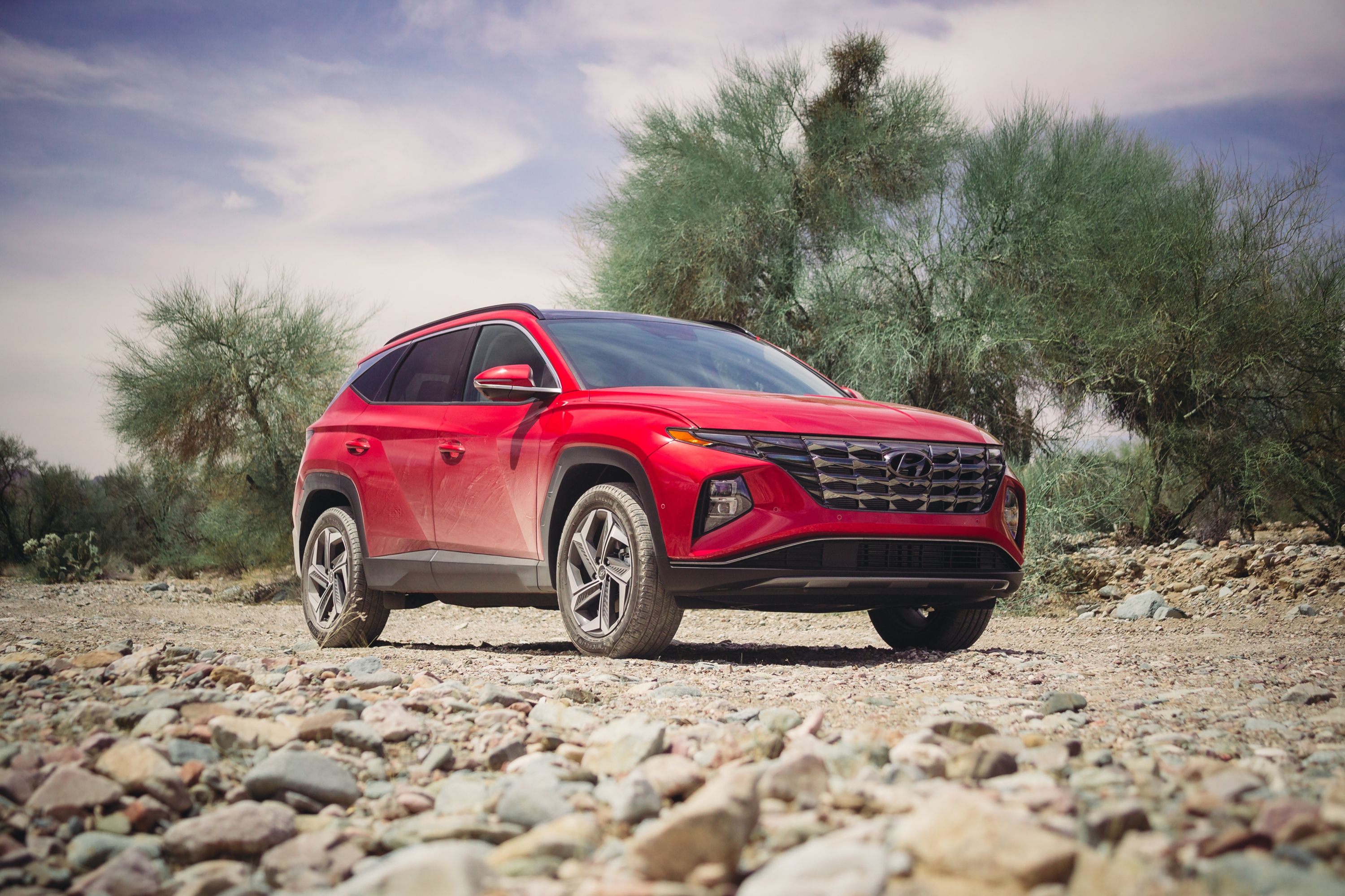
It's hard to dismiss your own biases when reviewing a car, whether it's because of the brand name, experiences you had in the past, or just an off-putting exterior look. The Toyota RAV4 suffered from it. It was probably a good car before it received this most recent facelift. And same goes for the Hyundai Tucson, which trudged along through two generations in anonymity.
But in 2015 the third generation launched, looking like a modern compact crossover with smooth lines, cool fog lights and a great selection of colors. It still sported a few less desirable engines, but we gave it a pass for its price and features. This brings us to the current generation, launched late in 2020 as a 2022 model. It features the company's new, wild headlight look, more space and more power. Here's why it's now at the top of its class.
Size Matters
We'll start with the design, which is what kept the Tucson from winning this segment for years. The new look follows the company's Sensuous Sportiness design evolved into what Hyundai calls Parametric Dynamics. That's the term for its jewel-like, multifaceted and angular surfaces. The daytime running lights are integrated into the new grille, and are only visible when illuminated.
The side profile makes the Tucson look like an anima sketch of a car in motion. We don't love the black cladding or the asymmetric arches, but we can deal with it. Utilizing a black D-pillar, there's no standard floating roof. Instead, it uses a chrome strip that runs from the side mirrors and around the daylight opening, splitting the roof and sides. It's also bigger, in every dimension, most importantly length, by six inches.
Powertrains Galore
We drove the Tucson Limited AWD model, which means a 2.5-liter Smartstream four making 187 hp and 178 lb-ft of torque. That's mated to an eight-speed automatic transmission and Hyundai's HTRAC all-wheel drive. Those power numbers are better than last year's optional 2.4-liter four, which made 181 hp and 175 lb-ft. The Tucson will also have the option of a 1.6-liter turbo-four with plug-in hybrids and regular hybrids on the way.
In practice, this 2.5 was perfectly acceptable for a vehicle like this. It's not an N model, but it moved around with an unexpected urgency, especially when in sport mode where the throttle is more sensitive and the shifts come later. Midrange passing is surprisingly good too. On the expressway at 65 mph, you can jump to 85 mph in just a few seconds. We didn't have weather to deal with in Michigan that week, but the AWD was great at speed on dirty and muddy roads. It splits torque automatically, so all you have to do is floor it and steer. We'll be excited to try the new Tucson XRT off-roader when it lands next year.
Creature Comfort Features
The reason Hyundai and Kia are kicking butt right now is because of their well-equipped models. Touchscreens were added to its inexpensive cars a decade ago, and things like heated seats and keyless entry are now mostly standard. The Tucson comes with a multilayered dashboard with heat vents on top and a big 10.25 landscape-style screen in the center on the Limited trim. Ambient mood lighting, which we love, comes in 64 colors.
The leather seats are almost Lexus comfortable and everywhere else you might touch is soft too. We're not completely sold on the push-button shifter - Kia got dials, Hyundai got buttons - but after a few days, we got used to it. The panel under the touchscreen looks cool but piano black is never the right option. These no-button panels have to be looked at while touching, as there are no dials or edges for you to feel blindly. The digital gauge cluster has a couple of modes including one that makes it look like classic analog dials.
Great Value With The Right Trim
The Hyundai Tucson competes in one of the toughest segments with the aforementioned and mega-popular RAV4, the Ford Escape and Nissan Rogue. The Toyota is probably the best looking of the bunch, but it's a little smaller than this Tucson, and probably wouldn't fit a family of four, with stuff for a long road trip. Cargo space on the Tucson measures almost 39 cubic feet, the RAV4 has 33 cubes.
The base Hyundai Tucson comes in just $100 more expensive than the Ford Escape, starting at $24,950. However, this Limited AWD model is way more expensive starting at $36,200 before $1,185 in destination and handling. That price puts it closer to near luxury models, but if we were speccing this car, it would be a cheaper version, which like we said, still comes with all the goodies you need. The SEL AWD comes with a ton of features like blind spot warning heated seats, forward collision avoidance, push button start, stop/start and a bunch more.
